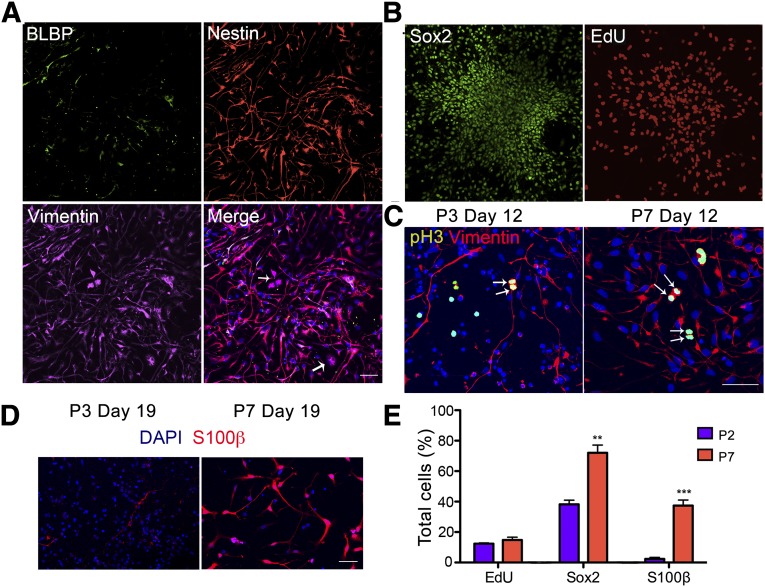Figure 4.
Transition of human embryonic stem cell-derived radial glia (RG) into a distinct late progenitor stage. (A): Late passage progenitors (P6 and beyond) lost expression of BLBP but retained nestin and vimentin expression. (B): Late passage progenitors are Sox2 positive and actively proliferating, as indicated by EdU labeling. (C): Early RG retained processes (left) during cell division, as indicated by pH3 staining but late progenitors did not (right). (D): The rare early passage (P3) S100β-positive astrocytes had stellate morphologies, and the abundant late (P7) ones were more fibroblast-like. (E): Quantification and comparison of marker expression among total cells in early (P2) and late (P7) passage RG cultures. The percentages of progenitors that incorporated EdU were similar between the two populations, and the late passage culture had significantly more Sox2- and S100β-positive cells. Data are mean ± SEM. Student’s t test, n = 4, ∗∗, p < .001; ∗∗∗, p < .0001. Scale bars = 50 μm. Abbreviations: BLBP, brain lipid-binding protein; DAPI, 4′,6-diamidino-2-phenylindole; EdU, 5′ethynyl-2′deoxyuridine; P, passage; pH3, phosphorylated histone H3.

